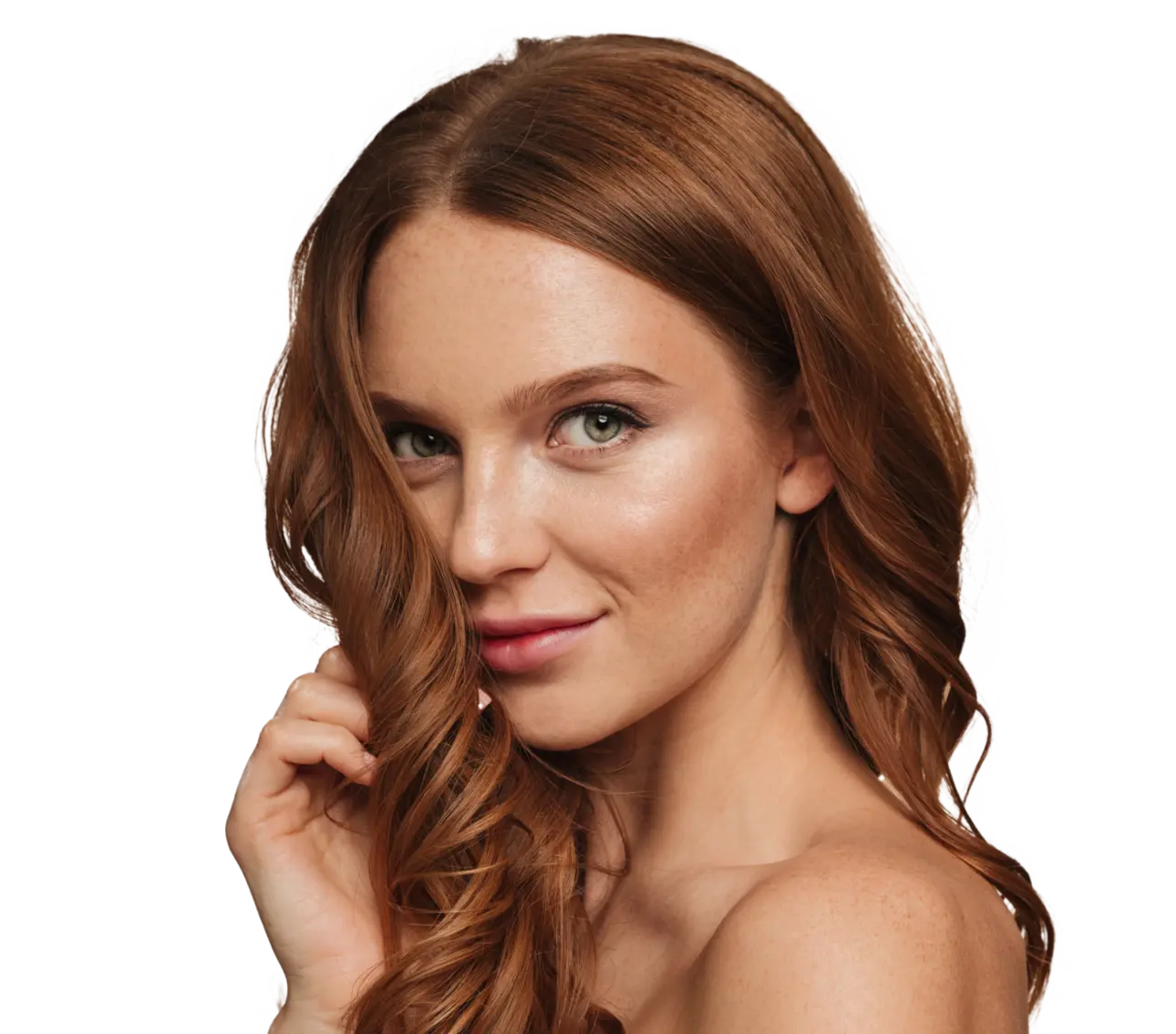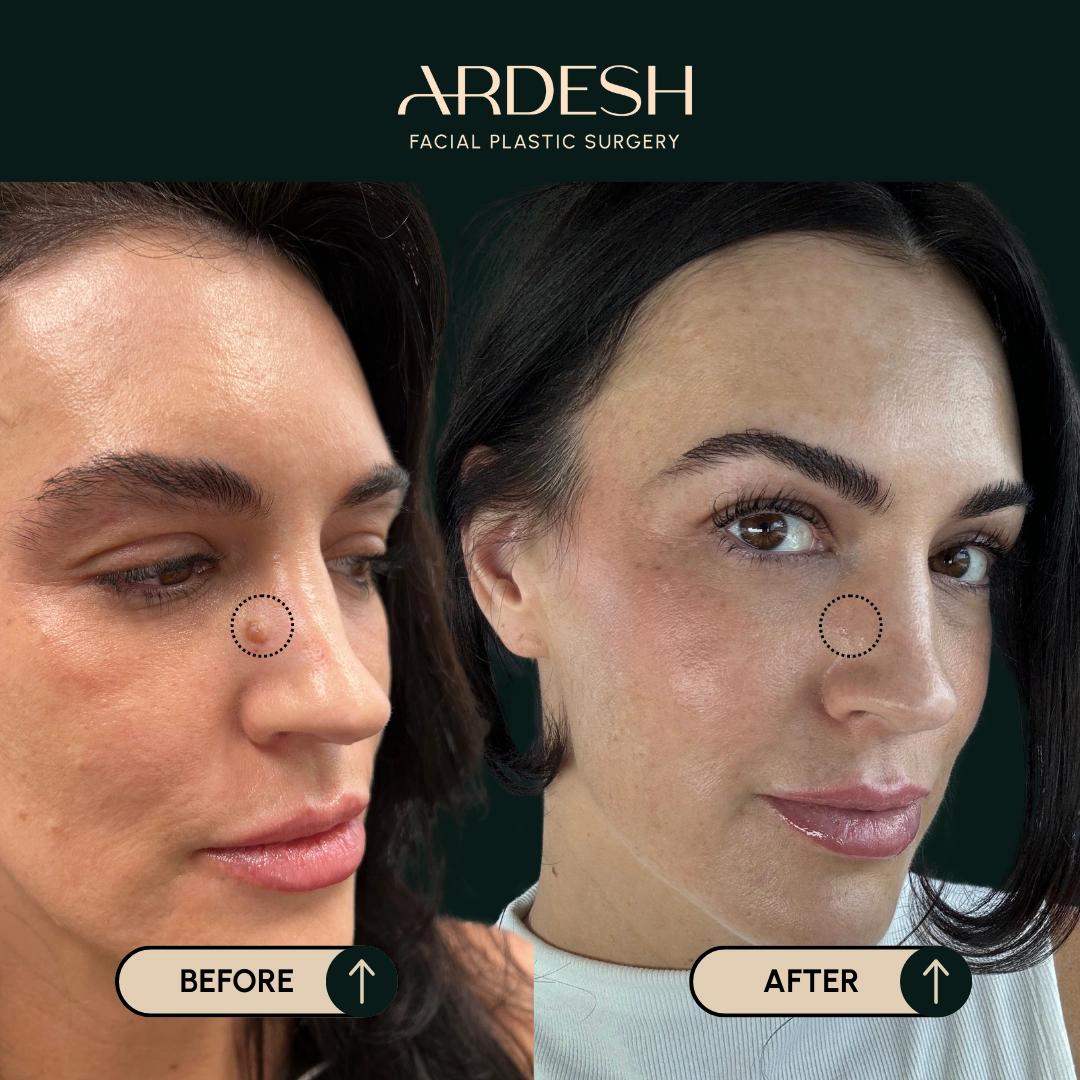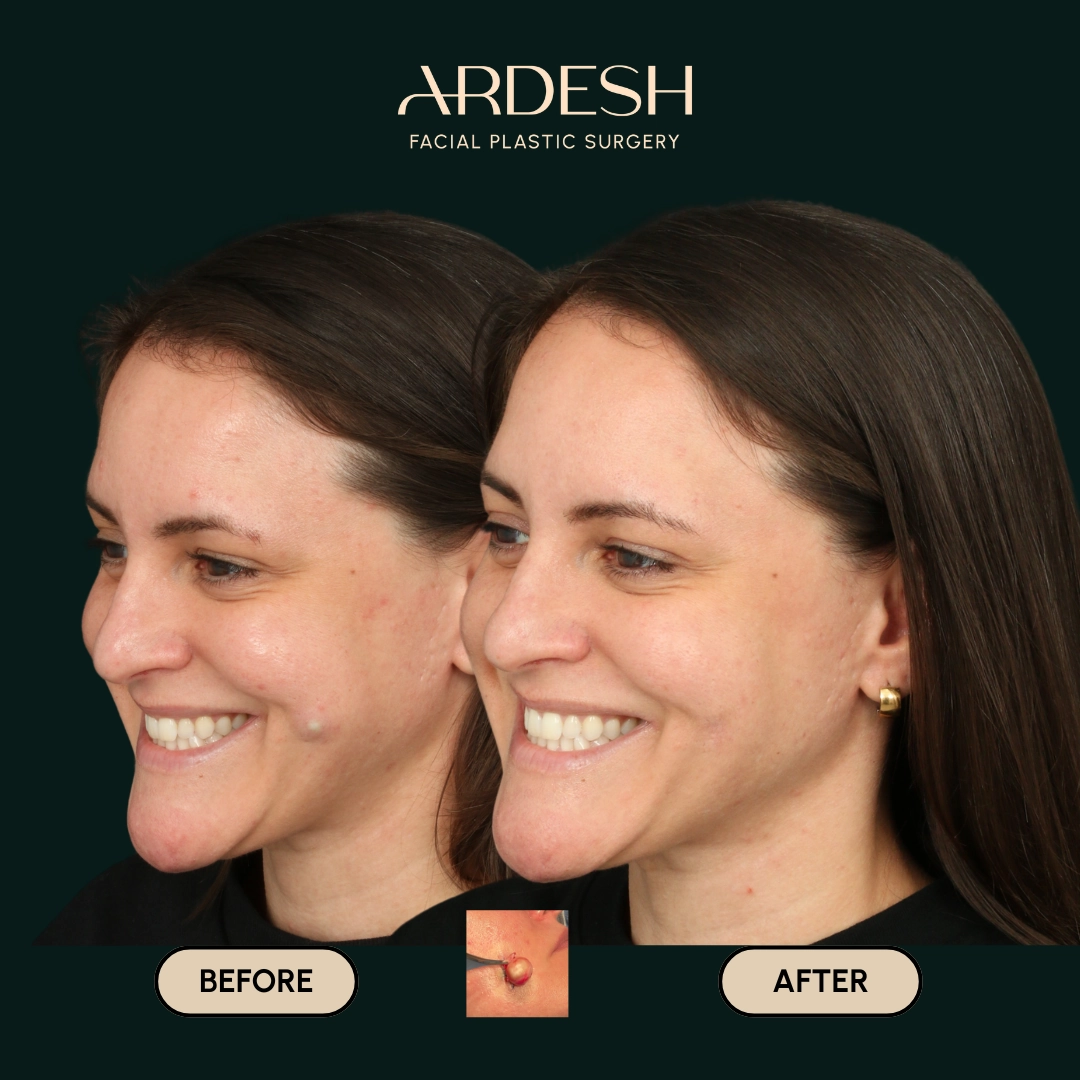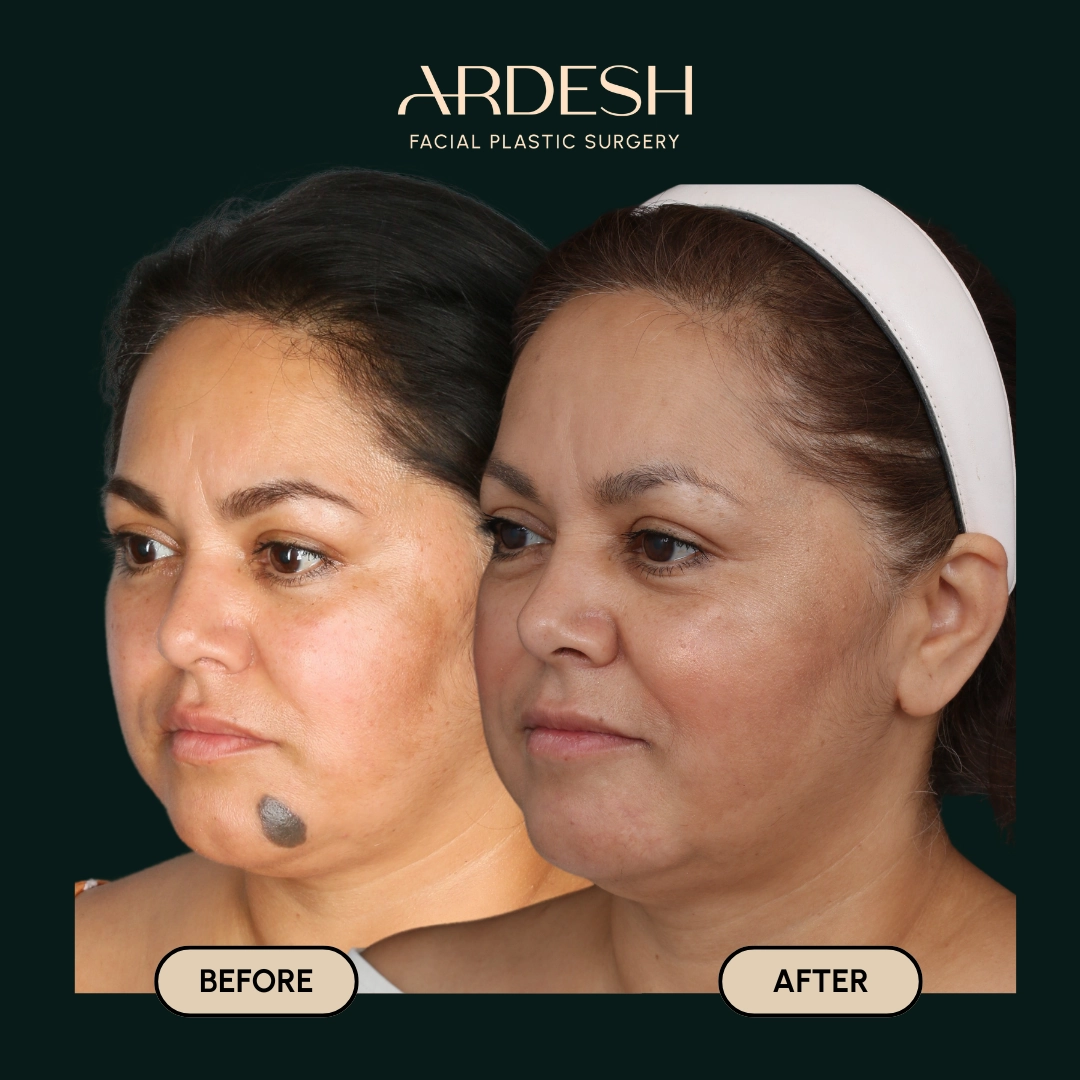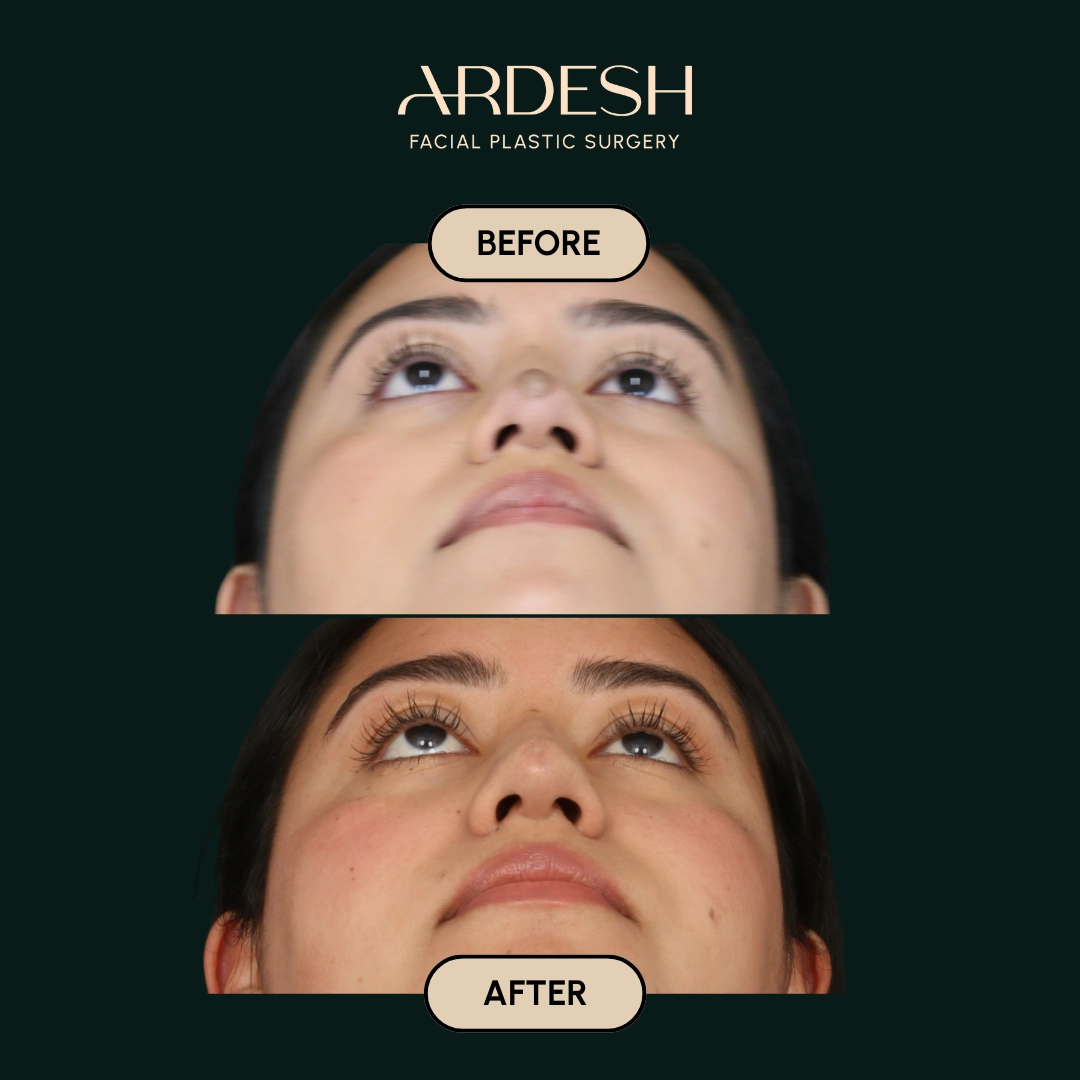Mole Removal Near You | Dr. Ardesh
Moles or beauty marks can appear anywhere on the body or skin, often showing up as dark or raised spots. Some people may want them removed for cosmetic reasons, while others may have concerns about skin cancer. Methods like electric current and liquid nitrogen are available but not typically recommended due to concerns about recurrence and diagnostic limitations. In both cases, getting a mole removed is an effective solution that can improve both your appearance and overall health. At our Beverly Hills and Newport Beach clinic, Dr. Ardesh offers pain-free, minimally invasive treatments that leave your skin scarless. Whether it’s to remove benign moles or a cancerous one, Dr. Ardesh will ensure you receive the best possible care.
Don’t Ignore That Mole! Find out when you should get it removed and how to ensure a smooth recovery. Read our blog now!Santa Monica
Los Angeles

Real Patients.
Real Transformations.
Meet Beauty Mark MD TM
The Nationally Trusted Expert for Mole Removal
Dr. Ardesh, known as Beauty Mark MD™, is America’s leading expert in mole removal. From large to small, old to new, dark to light — he handles it all with precision and care. Examining moles regularly is crucial for maintaining skin health, and Dr. Ardesh recommends annual screenings with a dermatologist to monitor potential skin issues. Using specialized techniques, Dr. Ardesh ensures minimal scarring, a painless experience, and a confident result that the mole won’t return. Contact us today!
Understanding Mole Removal
Mole removal is a common procedure that involves excising a mole from the skin. Moles are growths that can be either benign (non-cancerous) or cancerous. While most moles are harmless, some can be indicative of skin cancer. Removing moles is typically performed by a skin specialist, such as a dermatologist, who has the expertise to safely and effectively remove moles. The procedure is usually conducted in a doctor’s office or clinic and can be done for both cosmetic and medical reasons. Whether you’re looking to remove a mole for aesthetic purposes or due to health concerns, professional mole removal ensures the best care for your skin.

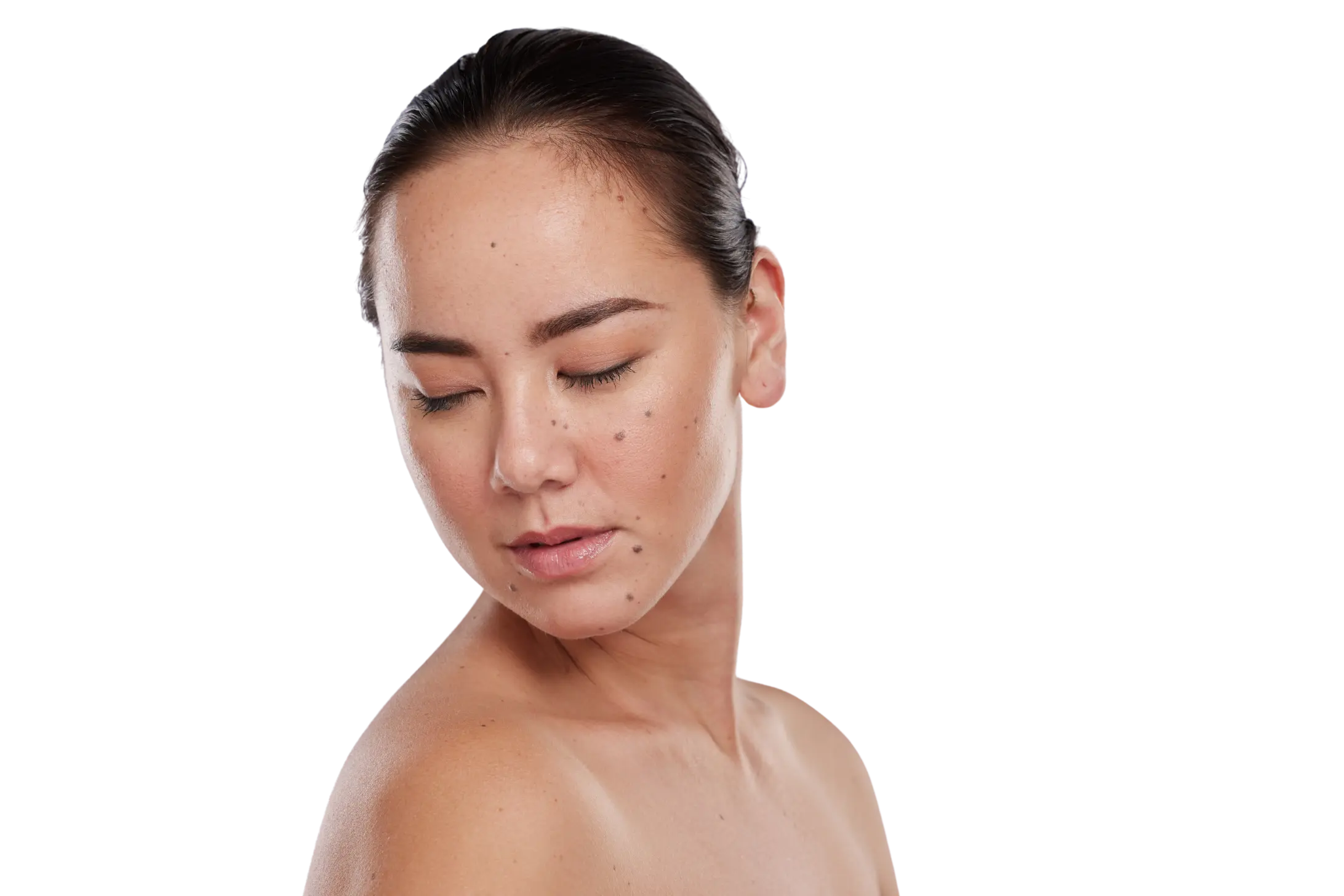
Why Consider Mole Removal for Skin Cancer?
You may consider mole removal for several reasons, including:
- Cosmetic and aesthetic reasons
- Irritation from moles
- Changes in the size, shape, or color of a mole
- Bleeding or painful moles
We send all removed moles for skin cancer testing and biopsy. It is crucial to have moles removed by a healthcare provider who can evaluate and determine the appropriate technique, such as shave excision, especially for non-cancerous moles. If the results of tests show that the mole removed is positive for cancer, your mole removal procedure could be covered by insurance
Risks of Not Removing a Mole
While most moles are benign, some can be a sign of skin cancer. If a cancerous mole is not removed, it can spread to other parts of the body, posing a serious health risk. Even benign moles can cause discomfort, irritation, or cosmetic issues if left untreated. Additionally, not removing a mole can delay the diagnosis and treatment of skin cancer, potentially reducing the chances of successful treatment. Regular monitoring and timely removal of suspicious moles are crucial for maintaining healthy skin and overall health.
Benefits of Mole Removal
Removing moles can have a significant impact on how you feel about your appearance. With smoother, clearer skin, you can enjoy a boost in self-esteem and confidence
Some moles can cause irritation, especially in areas where there is frequent friction from clothing or shaving. Removing moles in these areas can make your daily routine more comfortable.
Clearer, blemish-free skin can enhance your natural beauty. Mole removal helps even out your complexion, leaving you looking refreshed and polished.
While most moles are benign, some can develop into melanoma, a dangerous form of skin cancer. Removing suspicious moles is one way to protect your overall health.
Signs and Symptoms of a Mole That Should Be Removed
Certain signs and symptoms may indicate that a mole should be removed. These include:
- A mole that is asymmetrical or has an irregular shape
- A mole with an irregular border or edge
- A mole that has multiple colors or an unusual color
- A mole larger than 6mm in diameter
- A mole that is changing in size, shape, or color
- A mole that is bleeding or oozing
- A mole that is itchy or painful
If you notice any of these signs or symptoms, it is essential to consult a dermatologist. They can evaluate the mole and determine if it should be removed to ensure your skin remains healthy and cancer-free.

Common Types of Mole Removal Treatment
There are two common methods for removing moles, depending on their type and depth. Regardless of why you're considering removing a mole, Dr. Ardesh will carefully evaluate the mole during your appointment to determine and recommend the best treatment. Moles are clusters of skin cells, specifically melanocytes that produce pigment. It is important to monitor moles for changes, as some can develop cancerous cells, leading to the need for removal and biopsy to ensure safety.
For smaller, surface-level moles, this method is ideal. Dr. Ardesh uses a special tool to shave the mole until it’s level with the surrounding skin. This method has minimal scarring and a short recovery time. However, there’s a slight chance that the mole may grow back.
For deeper or potentially cancerous moles, excision is recommended. Dr. Ardesh uses a scalpel to remove the mole along with a small margin of surrounding tissue. Stitches may be used to close the wound, and the removed tissue is sent to a lab for analysis by a pathologist.
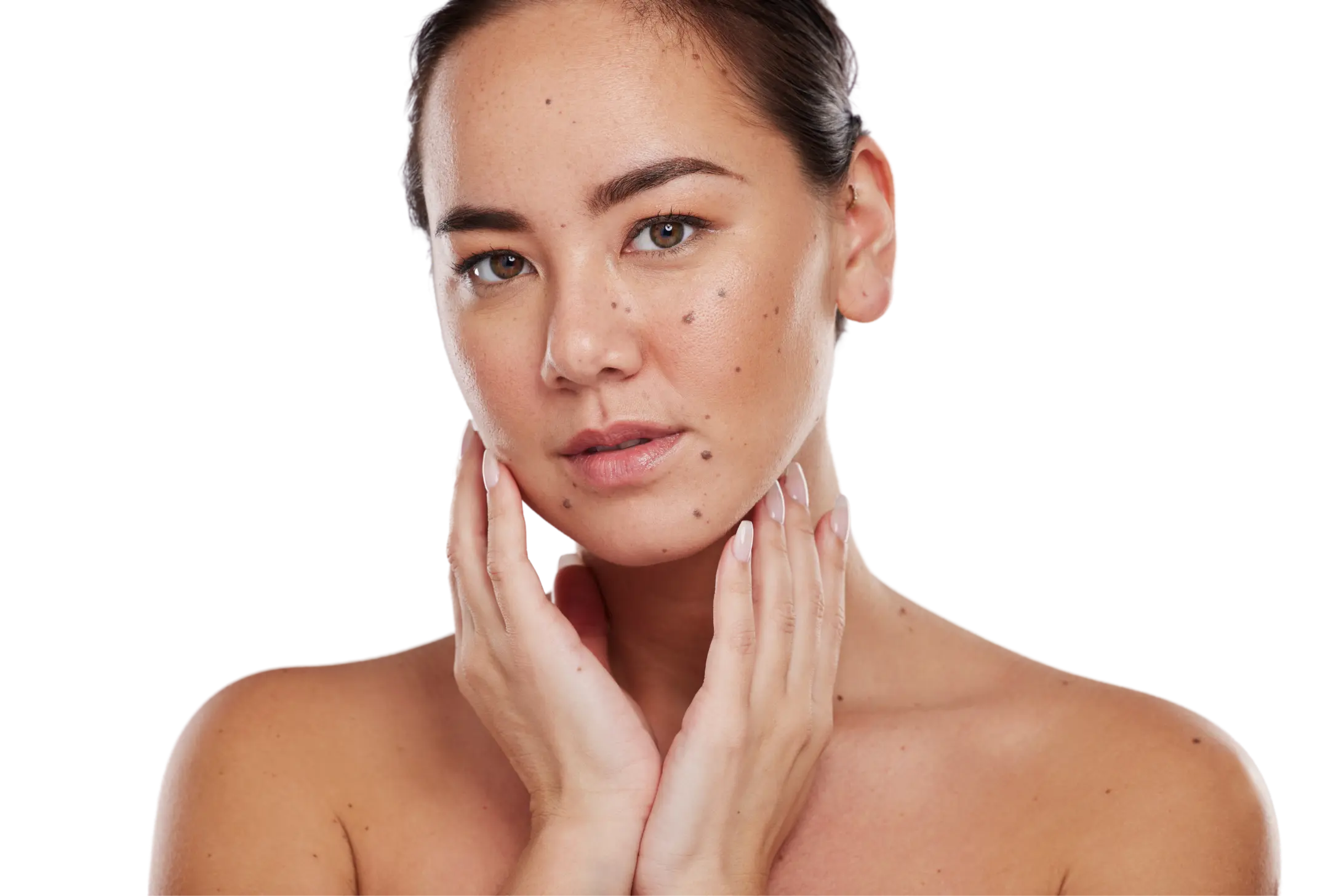
What to Expect with Your Mole Removal
The Consultation
During your consultation, Dr. Ardesh will perform a detailed skin exam, carefully evaluating your moles and addressing your concerns. He will talk to you and determine a personalized treatment plan and explain the specific procedure recommended, whether it's shave removal or surgical excision.
The Procedure
Most mole removal procedures are simple and take less than an hour. Depending on the type and depth of the mole, Dr. Ardesh will either shave it off or remove it surgically. Local anesthesia is used to ensure your comfort throughout the procedure. Other moles can be removed at the same time.
Post-Op Care
Recovery from mole removal is quick, typically within two weeks. It's important to protect the treated area by applying sunscreen and following Dr. Ardesh’s post-care instructions to ensure optimal healing.
Preparing for Mole Removal
Preparing for mole removal involves a few simple steps to ensure the procedure goes smoothly
- Stop taking any blood-thinning medications, such as aspirin or ibuprofen, at least a week before the procedure.
- Avoid smoking and tobacco products for at least a week before the procedure to promote better healing.
- Protect your skin from excessive sun exposure and use sunscreen regularly.
- Keep the area around the mole clean and dry.
- Avoid picking or scratching the mole to prevent irritation and infection.
We send all removed moles for skin cancer testing and biopsy. It is crucial to have moles removed by a healthcare provider who can evaluate and determine the appropriate technique, such as shave excision, especially for non-cancerous moles. If the results of tests show that the mole removed is positive for cancer, your mole removal procedure could be covered by insurance

Healing Stages and Recovery
Healing after mole removal is usually straightforward, with minimal discomfort. Most patients can resume normal activities shortly after the procedure. Following post-procedure care is essential to prevent any complications, such as infection or scarring. Dr. Ardesh will give you clear aftercare instructions, including applying sunscreen to the treated area to protect the wound and promote healing. Sutures usually come out within two weeks of removal, and after four weeks it’s like the mole was never even there!
While mole removal is generally safe, please note there are some risks, including mild pain, swelling, or scarring at the excision site. In rare cases, there is a risk of infection or an allergic reaction to the anesthetic. Dr. Ardesh will go over all potential risks during your consultation and ensure you are fully informed before proceeding.
Can I Remove a Mole at Home?
It is not recommended to remove a mole at home. While it might be tempting to try, doing so can lead to serious complications, including infection, scarring, and delayed diagnosis of skin cancer. A dermatologist has the training and experience to safely remove moles and diagnose any underlying skin conditions. Attempting to remove a mole at home can result in incomplete removal, causing the mole to grow back and potentially masking more serious issues.
If you are concerned about a mole, it is essential to consult a dermatologist. They can examine the mole, determine if it should be removed, and provide guidance on how to care for the treatment area to promote healing and minimize scarring. Prioritizing professional care ensures the best outcomes for your skin and overall health..
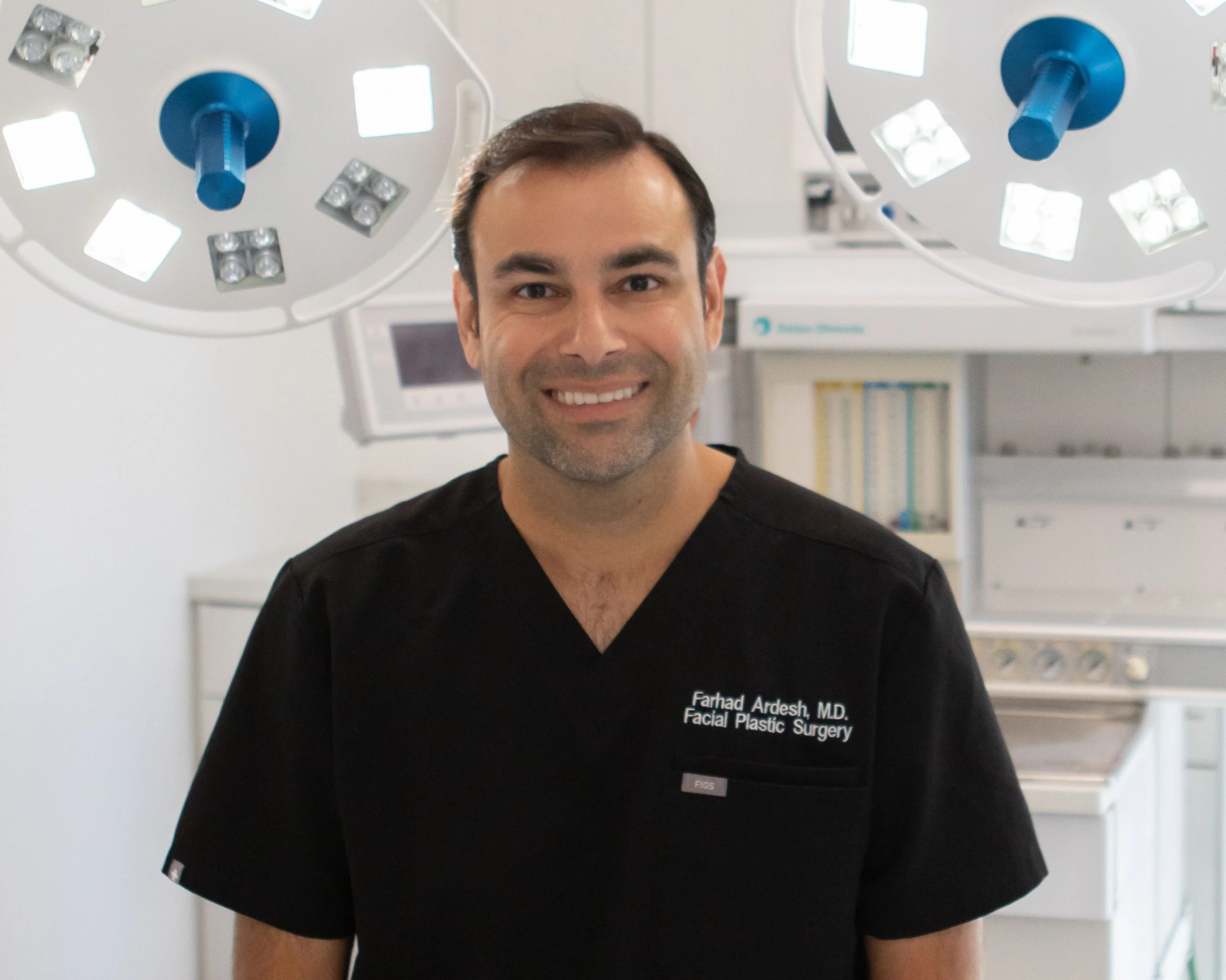
Why Choose Dr. Ardesh
Dr. Ardesh, a double-board certified facial plastic and reconstructive surgeon, has delivered over 7,000 natural results with expertise and empathy. His focus is on creating a refreshed look—never a “worked on” appearance—which should always be a surgeon’s objective. With advanced training in minimally invasive techniques, Dr. Ardesh ensures minimal scarring, less pain, and shorter recovery times. Beautiful outcomes are achieved through careful listening, open communication, and a commitment to patient safety and comfort. His goal is to help you achieve your desired look that inspires confidence and joy.
Schedule a Consultation
Schedule an Appointment Today
If you’re concerned about a mole or simply want it removed for aesthetic reasons, schedule an appointment with Dr. Ardesh today. Our team will provide a full skin exam, address any concerns, and create a personalized treatment plan for you. Don’t wait—take the first step toward clearer, healthier skin today.
